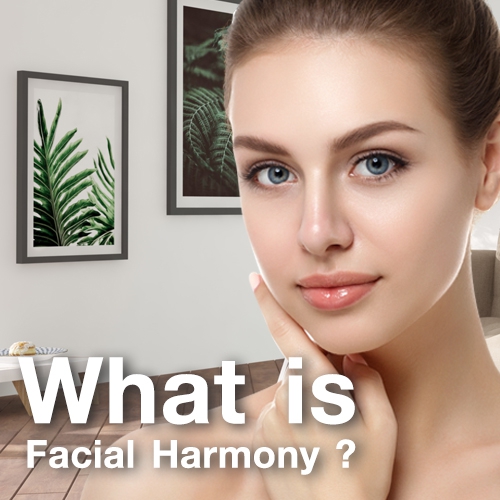What is Facial Harmony?
Facial harmony is a concept that has fascinated people for centuries, from ancient Greek philosophers to modern-day artists and plastic surgeons. It refers to the balance, proportion, and symmetry of facial features, where each element complements the others to create an aesthetically pleasing appearance. In this comprehensive article, we will explore the meaning of facial harmony, its importance, and how it differs from beauty standards.
Understanding Facial Harmony
Facial harmony is the alignment, balance, and proportion of facial features, including the eyes, nose, mouth, chin, and cheekbones. It is about how these features work together cohesively, with no single feature dominating or appearing out of place. Achieving facial harmony is not about having perfect features but rather about how well these features fit together.
Proportion and Symmetry
Two fundamental aspects of facial harmony are proportion and symmetry. Proportion refers to the size and spatial relationships between different parts of the face. Classical standards suggest that the face can be divided into thirds vertically (forehead, midface, and lower face) and fifths horizontally, each part contributing to overall balance. Symmetry, on the other hand, implies that the left and right sides of the face mirror each other closely.
Golden Ratio
Another concept often linked with facial harmony is the golden ratio, approximately 1:1.618. This ratio appears in various natural phenomena and is believed to be aesthetically pleasing. In facial aesthetics, the golden ratio can be applied to the width of the mouth to the width of the nose, the distance between the eyes, and other facial dimensions.
Perception of Beauty
Facial harmony plays a significant role in the perception of beauty. Numerous studies have shown that people generally find faces with balanced proportions and symmetry more attractive. This perception is not merely subjective but is rooted in evolutionary biology. Symmetrical faces are often associated with good health and genetic fitness, which can be subconsciously appealing as indicators of a potential mate’s quality.
Psychological Impact
The importance of facial harmony extends beyond external perceptions; it also affects individuals’ self-esteem and confidence. People who perceive their faces as harmonious are more likely to feel confident and satisfied with their appearance. This confidence can positively impact various aspects of life, including social interactions, career opportunities, and personal relationships.
Achieving Facial Harmony
Facial harmony can be achieved through various means, including non-surgical options, orthodontics, and cosmetic procedures. Non-surgical options, such as dermal fillers and neurotoxins, can help enhance specific features or correct asymmetries. Orthodontics can address issues related to the alignment of teeth and jaws, while cosmetic procedures, such as rhinoplasty (nose job), facelift, and blepharoplasty (eyelid surgery), can target specific facial features to create a more balanced appearance.It is important to note that not all patients will require all of these procedures to achieve facial harmony. The specific treatment plan will be tailored to each individual’s unique needs and goals. It is crucial to consult with qualified professionals, such as dermatologists, orthodontists, and plastic surgeons, who can help you achieve the desired results safely and effectively.
Facial Harmony vs. Beauty Standards
While facial harmony and beauty standards are often intertwined, they are not the same. Beauty standards are influenced by various factors, including culture, media, and personal preferences. These standards can change over time and may vary across different societies. In contrast, the basic tenets of facial harmony have remained largely unchanged, focusing on balance, proportion, and symmetry.It is important to recognize that beauty is subjective and that facial harmony is not the only factor that contributes to attractiveness. Personal style, confidence, and inner beauty also play a significant role in how we perceive and are perceived by others.
Table of Facial Harmony Concepts
| Concept | Description |
|---|---|
| Proportion | The size and spatial relationships between different parts of the face |
| Symmetry | The degree to which the left and right sides of the face mirror each other |
| Golden Ratio | A mathematical ratio (approximately 1:1.618) believed to be aesthetically pleasing |
| Facial Thirds | Dividing the face vertically into three equal parts (forehead, midface, and lower face) |
| Facial Fifths | Dividing the face horizontally into five equal parts |
FAQ Section
Q1: What is facial harmony?A1: Facial harmony refers to the balance, proportion, and symmetry of facial features, where each element complements the others to create an aesthetically pleasing appearance.
Q2: What are the key aspects of facial harmony?A2: The key aspects of facial harmony are proportion, symmetry, and the golden ratio. Proportion refers to the size and spatial relationships between different parts of the face, while symmetry implies that the left and right sides of the face mirror each other closely. The golden ratio is a mathematical ratio (approximately 1:1.618) believed to be aesthetically pleasing.
Q3: How does facial harmony differ from beauty standards?A3: While facial harmony and beauty standards are often intertwined, they are not the same. Beauty standards are influenced by various factors, including culture, media, and personal preferences, and can change over time. In contrast, the basic tenets of facial harmony have remained largely unchanged, focusing on balance, proportion, and symmetry.
Q4: Can facial harmony be achieved through non-surgical means?A4: Yes, facial harmony can be achieved through various non-surgical options, such as dermal fillers and neurotoxins, which can help enhance specific features or correct asymmetries. Orthodontics can also address issues related to the alignment of teeth and jaws.
Q5: Is facial harmony the same as beauty?A5: No, facial harmony and beauty are not the same. While facial harmony plays a significant role in the perception of beauty, it is not the only factor that contributes to attractiveness. Personal style, confidence, and inner beauty also play a significant role in how we perceive and are perceived by others.
Conclusion
Facial harmony is a complex and fascinating concept that has captured the imagination of people for centuries. It is about balance, proportion, and symmetry, where each facial feature works together to create an aesthetically pleasing appearance. While facial harmony is often associated with beauty, it is important to recognize that beauty is subjective and that there are many paths to feeling confident and attractive.For more information on facial aesthetics and beauty standards, you can refer to resources available on Wikipedia.



